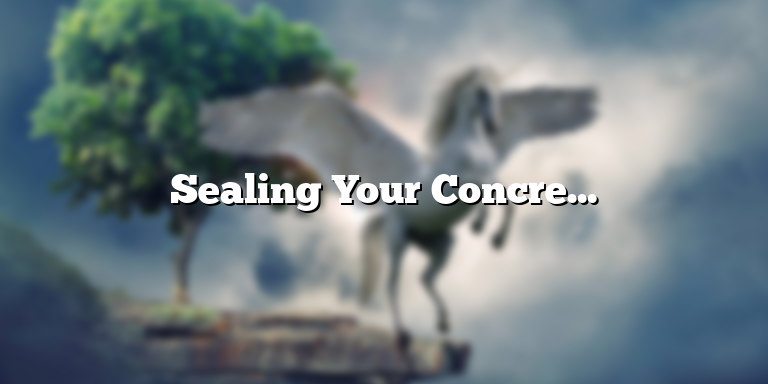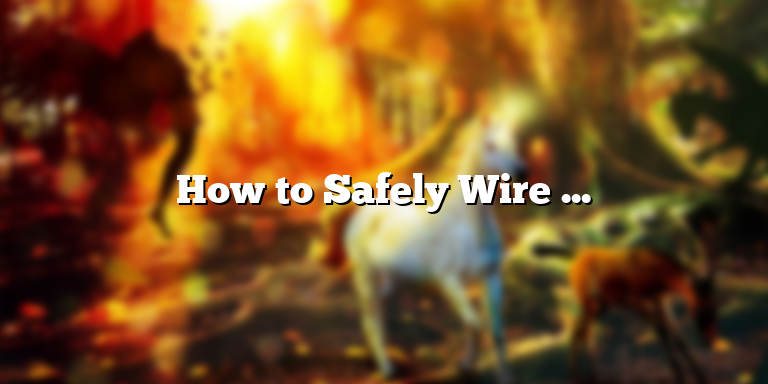
Step-by-Step Guide on Painting Northern Lights
Creating a painting of the Northern Lights is not easy but with the right techniques and tools, it can be a stunning and mesmerizing piece of art. Here we present you with a step-by-step guide on how to paint the Northern Lights.
Step 1: Choose your Colors
Choosing colors is a crucial step in painting the Northern Lights. Since the Northern Lights consist of multiple colors, you will need various shades of blue, green, purple, and pink. You can mix these colors and create different shades to achieve a more natural and realistic look. Make sure to have a white paint on the side as well for creating a contrast with the bright colors.
Step 2: Prepare your Canvas
Choose a canvas size that suits your convenience. It could be a larger one or a smaller one depending on how detailed you want your painting to be. Before you start painting, prime your canvas with white paint to avoid any color muddiness. Alternatively, use any other light color as the base coat for the Northern Lights.
Step 3: Blend the Background
The background of a Northern Lights painting should be blended from light to dark. Start from the top of the canvas and blend the colors using gentle strokes. This will create a gradient effect where the top is darker than the bottom. Keep in mind that the background should be visible but not overpowering.
Step 4: Create the Silhouette
While creating the Northern Lights silhouette, choose a subject that does not compete with the lights. A tree, an animal, or a simple cabin would be an excellent choice. Sketch the silhouette on the canvas and then use black paint to fill in the shape carefully.
Step 5: Paint the Northern Lights
Using a thin brush, start painting the Northern Lights. Begin from the top of the canvas and work your way down. Use a gradual stroke for a smooth transition from one color to another. Make sure the colors blend well and are not muddy. Vary the shapes and sizes of the lights to add more dimension and excitement to the painting.
Step 6: Add Snow
Lastly, to give the painting a realistic look, you can add snow or ice in the foreground. Use different shades of white, gray, and blue to create a textured, snow-covered ground. This will enhance the Northern Lights and make your painting look truly magical.
Painting the Northern Lights requires patience, creativity, and attention to detail. But it is also an incredibly rewarding experience, seeing the painting come to life and capturing the beauty of one of nature’s most spectacular phenomena.
Mood and Color Palette
When it comes to painting Northern Lights, it’s not just about the colors you use, but also the mood you want to evoke in your artwork. The Northern Lights are a natural wonder that inspire awe and wonder in those lucky enough to witness them. Capturing that sense of magic in your painting requires careful consideration of both mood and color palette.
The color palette you choose for your Northern Lights painting plays a crucial role in setting the mood. Northern Lights typically feature shades of greens, pinks, blues, and purples. However, don’t limit yourself to these colors–experiment with shades of gold, crimson, and even black. The key is to choose colors that complement each other and blend together seamlessly.
When selecting your color palette, consider the mood you want to convey. Do you want to paint a peaceful, serene scene, or a dramatic, intense one? To create a calming scene, opt for pastel shades of green and pink. For a more dramatic look, blend deep blues and purples with brighter pinks and greens.
Another consideration when creating the mood for your Northern Lights painting is the composition and placement of the lights in the sky. The aurora borealis creates an otherworldly effect, and using a bit of artistic license, you can position the lights in a way that best fits the mood you want to convey in your painting.
When it comes to choosing colors for your Northern Lights painting, don’t be afraid to experiment. You might be surprised at the stunning results that come from mixing different hues and blending colors together. Remember that the color palette sets the foundation for the mood in your painting, so take your time in choosing the perfect shades to bring your artwork to life.
Choosing the Right Painting Technique
Painting Northern Lights is a unique and challenging task. It requires a thorough understanding of the subject and a good control over your painting technique. If you’re wondering how to paint Northern Lights, here are a few tips on how to choose the right painting technique for this stunning natural phenomenon.
Wet-on-Wet Technique
The wet-on-wet technique is a popular choice for painting Northern Lights, as it allows for a smooth and seamless blending of colors. This technique involves adding wet paint onto an already wet surface, which helps the colors to merge together and create a stunning gradient effect.
Pros: The wet-on-wet technique is great for creating a soft and natural look of the Northern Lights. It is also a quick and efficient technique, which can save you time and effort in the painting process.
Cons: One of the major challenges of the wet-on-wet technique is controlling the paint, as it tends to spread and blend out quickly. This can make it difficult to create sharp lines and edges, which are important for depicting the distinct shapes and patterns of the Northern Lights.
Using a Palette Knife
Another technique that can be used to paint Northern Lights is using a palette knife. This technique involves applying paint to the canvas using a flat, flexible blade, which can create a textured and dimensional effect.
Pros: Using a palette knife can add depth and texture to your painting, which can create a unique and eye-catching effect. It can also help you to create precise lines and edges, which are important for emphasizing the sharp shapes of the Northern Lights.
Cons: One of the challenges of using a palette knife is that it can be difficult to control the paint and achieve a smooth blend of colors. It can also be a time-consuming technique that requires patience and practice to master.
It’s important to note that there is no one right way to paint Northern Lights. The technique that you choose will depend on your personal preferences, level of expertise, and the effect that you want to achieve. Whether you choose wet-on-wet or using a palette knife, the key to painting Northern Lights is to experiment with different techniques, colors, and brush strokes, until you find the one that captures the beauty and mystery of this natural phenomenon.
Gathering Reference Materials
Before starting, it is important to have references to guide you in painting the Northern Lights. Browse through photographs of the Aurora Borealis or watch videos that showcase the movement and color transitions. Take note of the color schemes and the shapes that the Northern Lights form while moving through the sky.
You can also create your reference material by observing the actual Aurora Borealis. If you are lucky enough to live in an area where the Northern Lights are visible, take time to immerse yourself in the natural phenomenon. Sometimes, the Northern Lights appear on the horizon during winter, creating an excellent painting subject to study. Taking photographs of the Northern Lights can also be useful for reference.
Preparing Your Painting Materials
When painting the Northern Lights, the supplies you choose can help you achieve the desired outcome. Traditional painting supplies like canvas, brushes, and paints are essential, but there are a few things to keep in mind to make your painting process more efficient.
Choose paint colors that mimic the natural hues of the Northern Lights. Colors like various shades of blue, violet, green, and yellow will create a realistic and stunning picture. Additionally, get yourself a variety of brushes with different shapes and sizes. For blending, use a blending brush which usually has soft bristles to create the best effect possible.
Crafting the Northern Lights
Begin by sketching the outline of your painting on your canvas. Create the shape of the Northern Lights by using your preferred brush size and making wild, sweeping strokes to form an undulating movement in the sky. Ensure that you use light touches here because you only need to create the line art of the Northern Lights in this step; it doesn’t have to be precise or the final shape.
With your shapes ready, start blocking in the colors of the Aurora Borealis. Using your preferred brush size and color, start painting from one end of the sky to the other. Don’t worry about blending the colors together while painting as you’ll blend them in a later step. The strokes again should be light touches that create the shape of the sky with the Northern Lights present.
Next, blend the paint colors using a blending brush. Brush over the entire width of the sky using the blending brush, combining all colors to form new shades resulting in a stunning effect on the sky. Continue blending until you are satisfied with the merging of the colors.
Add the Final Touches
Now that the colors are blended, it’s time to add the final details to your painting to make the Northern Lights stand out. Thin paint with water using a brush and splatter it over the canvas to create stars or snowflakes in the foreground. Remember, the painting is about the Northern Lights, so don’t add too much detail to distract from the main element.
Lastly, take some time to look over your painting and add any additional details you feel necessary to finish the painting. This can include highlights of colors to brighten the Northern Lights or darker parts to make depth. Once you are happy with your creation, sit back and enjoy what you’ve created.
In conclusion, painting the Northern Lights can be a great way to unleash your creativity and create stunning pieces of artwork. With reference materials, adequate painting materials, and a few tips and tricks up your sleeve, you can paint your Aurora Borealis with ease. Make sure to use light touches, blending brushes, and the right paint colors to perfect your painting. Happy painting!
Troubleshooting
As with any painting, sometimes things don’t go as planned. Here are some tips on how to troubleshoot common mistakes and make adjustments to your northern lights painting:
Problem:Colors are muddied or too dark
Solution: This can happen when too many colors are mixed together or the paint is applied too thickly. To fix this, use a clean brush to blend any muddy areas and thin out the paint with water. Then, apply a lighter color over the top to brighten it up.
Problem:Colors are too bright or harsh
Solution: If your colors are coming out too bright or harsh, try mixing in a small amount of black or gray to tone them down. You can also blend colors together with a clean brush to create a smoother transition.
Problem: Northern lights don’t look realistic
Solution: One common mistake when painting northern lights is to create too many small strokes or lines that don’t flow together. Instead, try using long, sweeping strokes to create a more natural effect. You can also experiment with different colors and tones to add depth to your painting.
Problem: Canvas is too bare or crowded
Solution: Finding the right balance on your canvas can be a challenge. If your painting looks too empty, try adding more stars or a foreground landscape to fill the space. If your painting is too crowded, consider removing some of the elements or scaling them down to create more visual space.
Problem: Can’t get the effect you want
Solution: Achieving a specific northern lights effect may take some experimentation and practice. Don’t be afraid to try different techniques or colors until you find the right combination. You can also look for inspiration in photos or other paintings to see how other artists have approached the subject.
Remember, painting northern lights can be a challenging but rewarding experience. Don’t be afraid to make mistakes and learn from them. With practice and patience, you’ll be able to create stunning works of art that capture the beauty of this natural phenomenon.






